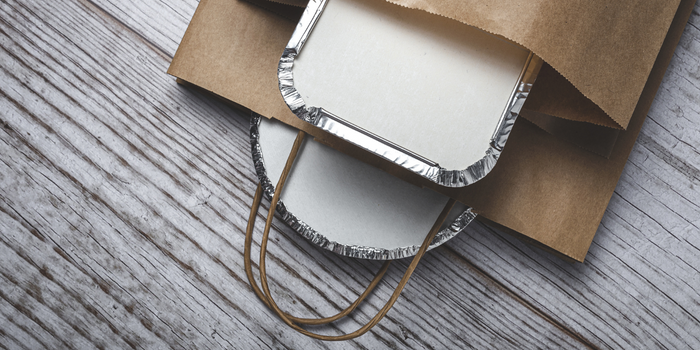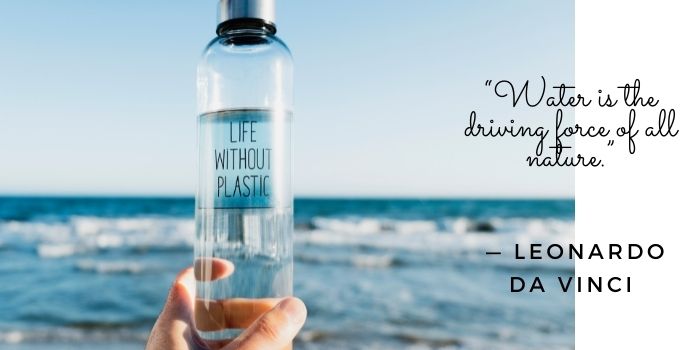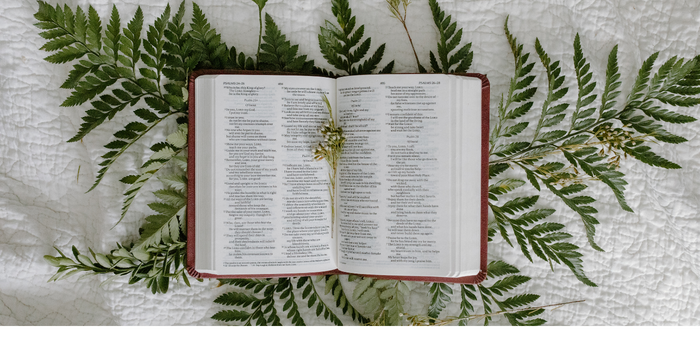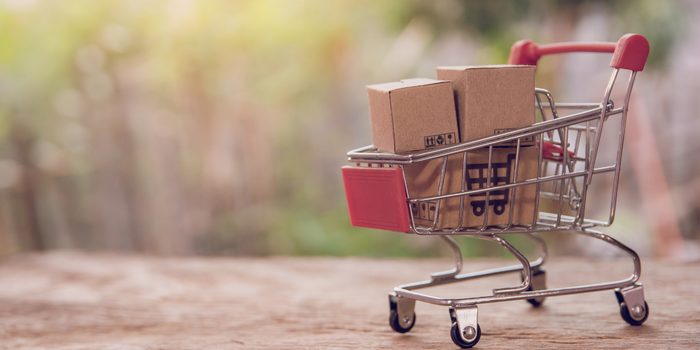We all love to buy things. It feels good to get something new, especially when we didn’t even know we wanted it. However, not everything that we want is something that we need. In fact, there are quite a few things that we can live without buying altogether! In this blog post, we will discuss 35 items that you don’t need to buy. Keep reading for some helpful tips on how to save money and live a happier life!
1. Brand name clothes and shoes
Let’s be honest—we all like to look good. But there’s no need to spend a fortune on clothes and shoes just to keep up with the latest trends. In fact, many of the most popular fashion brands are actually quite overpriced. So what’s the alternative? Well, there are plenty of great options out there for stylish yet affordable clothes and shoes. You just need to know where to look. Department stores, discount retailers, and even online outlets offer a wide range of fashionable items at very reasonable prices.
So next time you’re looking for a new outfit, don’t break the bank—instead, find some great deals on quality clothes and shoes that will make you look just as good as the people who paid full price.
2. Exercise Clothing
Most of the time it’s just a marketing catch to make you buy more clothes. It’s true that exercise clothing can help you perform better, but it’s not a necessity if your workout clothes are comfortable and breathable. If you prefer to have specific equipment, try looking online or at thrift stores for secondhand options rather than buying brand-new. After all, there are plenty of affordable alternatives that can help you look good and stay comfortable while exercising.
3. Formalwear

Another luxury expense that we often consider necessary is formalwear, whether it be fancy dresses or tuxedos. However, they may not always be appropriate for every occasion. Instead, you can rent formalwear for any event, which will help you save money and still look great. Just do a quick search online or ask around at local stores to find out where you can rent formal dresses or suits in your area.
4. Face Masks & Skin Lotions
From lavender to oatmeal, there’s a DIY face mask or skin lotion out there for everyone. And what’s not to love? You get to mix up a little concoction in your kitchen, using ingredients that you probably already have on hand. Plus, it’s much cheaper than buying a product at the store. And who doesn’t love feeling like a mad scientist, experimenting with new recipes?
But before you start whipping up your own custom creations, there are a few things you should keep in mind. First, do your research. Make sure you know what each ingredient does and whether it will work well with your skin type. Second, test the recipe on a small patch of skin before slathering it all over your face. And lastly, be patient. Just because a recipe calls for overnight results doesn’t mean it will work that fast for everyone.
So go ahead and enjoy the process of mixing and matching ingredients until you find the perfect combination for you. Your skin will thank you for it!
5. Toothpaste and oral care products
You can actually make DIY toothpaste, it’s pretty easy! Instead of buying premade toothpaste from the store, make your own at home with a few simple ingredients.
6. Deodorant
It’s pretty easy to make your own, check out our guide on deodorant!
7. Shampoo and body wash
There are also plenty of ways to make your own shampoo or body wash, from using natural ingredients like honey and coconut oil to more complex DIY recipes. Check out this guide for some ideas on how to make your own at home.
8. Expensive beauty products
Beauty products can be another big expense, especially when we’re buying the most expensive brands. However, there are many affordable alternatives out there that give us similar results without breaking the bank. Do some research to explore your options and find the best deals on the products you need.
9. Dishwasher Rinse Agent

If you’ve ever run a dishwasher, you know that there are some things that just don’t come clean, no matter how many times you hit the start button. Stuck-on food, greasy residue, and water spots can all make your dishes look less than stellar. But there’s no need to reach for toxic commercial dishwashing detergents to get your dishes looking sparkling clean. You can easily make your own dishwasher rinse agent at home with just a few simple ingredients.
All you need is white vinegar, lemon juice, and baking soda. Simply mix equal parts of each ingredient and store in a clean spray bottle. When it’s time to run the dishwasher, just give your dirty dishes a quick spritz with the homemade rinse agent and let the machine do the rest. You’ll be amazed at how well it works! Plus, you’ll avoid exposing yourself and your family to harmful chemicals. So go ahead and give it a try – your dishes will thank you for it!
10. Clothes dryer sheets
Not only are they unnecessary, but they can also be harmful to the environment due to their chemical composition. Instead, use natural alternatives like wool balls or fabric softeners infused with essential oils.
11. Fancy electronics
From TVs and computers to smartphones and tablets, we all love our fancy gadgets. However, that doesn’t mean that we need to spend a lot of money on them. There are many affordable options out there, so don’t feel pressured to buy the most expensive models on the market.
12. Expensive furniture
Similarly, high-end furniture can be an unnecessary expense that we don’t need to make. Instead, look for more affordable options that will still provide you with the style and functionality you want in your home. You can even consider buying used or refurbished pieces to save money without compromising on quality.
13. Fancy cars
A flashy car is certainly a sign of wealth, but it can also be an unnecessary expense in many cases. Instead, look for more affordable used options that will still get you where you need to go. You could even consider buying and repairing an old vehicle yourself as a cost-effective alternative.
14. Subscriptions and memberships
While subscription services can be convenient, they can also add up to a significant expense over time. Consider whether you really need all of the subscriptions and memberships that you are paying for, or if there is one that you could do without. By evaluating your spending habits, you may find that you can save a lot of money in the long run.
15. In-App Purchases
We’re all familiar with in-app purchases. They’re those little add-ons that you can buy in order to improve your game/app experience. But do you really need them? In most cases, the answer is no. In-App Purchases are often unnecessary, and they can end up costing you a lot of money. Next time you’re facing a dilemma of in-app purchase, just try to find a different one that’ll offer the features you need for free.
16. Extended Warranties
Many people decide to buy an extended warranty when they purchase a new piece of electronics or another household item. However, these warranties can often be a waste of money, as they usually don’t cover as much as you think they do and often cost more than the item itself.
If you’re thinking about buying an extended warranty, it’s important to do your research first to make sure you’re getting the best deal. Read the terms and conditions carefully, and make sure you understand what is and isn’t covered. If you still have questions, be sure to ask the retailer or manufacturer for clarification.
In most cases, it’s probably not worth buying an extended warranty. However, there are a few exceptions where it may make sense, so it’s always worth considering all of your options before making a decision.
17. Takeout and restaurant meals

Eating out is a luxury that many of us enjoy, but it can be an expensive one as well. Consider making more home-cooked meals instead, which will allow you to control your portion sizes and ingredients while also saving you a lot of money.
18. Prepackaged foods and drinks
Another way to save money on groceries is by avoiding prepackaged foods and drinks wherever possible. Instead, get into the habit of cooking your own meals from fresh, whole ingredients that you buy in bulk as needed. You will be amazed at how much money you can save this way!
19. Pre-Portioned Produce
There are two issues with that: it’s more expensive than buying a whole product and cutting it yourself and all that packaging waste!
20. Food Wrapping Paper
Believe it or not, you can actually make your own beeswax food wrapping paper. We have a whole guide outline with simple steps and instructions.
21. Bottled Water

All you need is a reusable water bottle. Not too big, not too small, perfect size to carry around and you don’t have to spend money on water bottles again.
While bottled water may seem like a convenient and affordable option, there are actually many reasons why it’s better to stick with reusable water bottles instead. For one thing, bottled water is often filled with harmful chemicals that can leach into your drinking water over time. In addition, buying bottled water creates a huge amount of unnecessary plastic waste, which can be bad for the environment and our oceans.
So if you’re looking for an affordable and eco-friendly alternative to bottled water, why not invest in a reusable water bottle today? Your body and the planet will thank you!
22. Organized and scheduled activities for your kids
Many parents feel a sense of pressure to provide their children with “enriching” experiences, but is that really necessary? Kids learn plenty through simple, day-to-day activities like playing outside or reading books together. So instead of overloading your kids with organized activities, let them experience life at a slower and more natural pace.
23. Take care of yourself
Sometimes we feel like we need to pamper ourselves in order to stay happy and healthy, but that doesn’t mean that it has to be an expensive process. There are many ways to treat yourself without spending money, such as enjoying a relaxing bath or taking a walk outside.
24. Multivitamins
When it comes to getting your daily dose of vitamins and minerals, you have a few options. You could eat a balanced diet rich in fruits, vegetables, and whole grains. Or you could pop a multivitamin every day. Although, studies have proved that multivitamins are not that helpful and you’re totally better off getting your vitamins from natural resources. Here are a few of our favorite sources of vitamins and minerals from the natural world:
Sunflower seeds: These little seeds are packed with nutrients like vitamin E, magnesium, and selenium. Snack on a handful of sunflower seeds for a boost of energy and antioxidants.
Dark chocolate: That’s right, chocolate can actually be good for you! Dark chocolate is loaded with antioxidants and minerals like iron, magnesium, and copper. Just be sure to choose varieties with at least 70% cacao for the most health benefits.
Oysters: Love them or hate them, oysters are one of the best sources of zinc out there. Zinc is essential for a healthy immune system, so eating oysters can help you fight off colds and viruses.
Lentils: These humble legumes are an excellent source of fiber, protein, and iron. Add them to soups, stews, or salads for a nutrient-rich boost.
So next time you’re looking for a way to get your daily dose of vitamins and minerals, consider turning to nature’s Pharmacy first. From sunflower seeds to dark chocolate, there are plenty of delicious and nutritious options to choose from.
25. Recreational drugs and alcohol
While it can be fun to enjoy these substances in moderation, they can also be very expensive depending on the frequency of your consumption. Consider cutting back on your habits or opting for lower-cost alternatives instead, like a glass of wine with dinner or a nightcap before bed.
26. Express your creativity
Instead of spending money on expensive recreational activities, consider exploring your creative side instead. Whether you are into writing, drawing, or music, there are many ways to express yourself and have fun without spending a lot of money at all. Some free or low-cost options to consider include:
- Writing short stories, poems, or journal entries.
- Taking online classes in various creative fields.
- Going for long walks and writing down your thoughts and observations as you go.
- Joining a local writing or art group to connect with other creatives.
- Drawing inspiration from the natural world and painting or sketching what you see.
- Hanging out with friends and jamming on the guitar or piano together.
- Donating your creative work to charity and using it to help others.
There are endless ways to hone your creative skills and express your creativity, so be sure to take advantage of them as much as possible! By doing so, you can have fun and save money at the same time.
27. Valentines
There are many ways that you can show your loved ones that you care without spending a lot of money. Some simple and free options include:
- Sending hand-written cards or love letters.
- Making an extra effort to spend time with them and do things together that you both enjoy.
- Cooking them their favorite meal
28. Bookmarks

There are many ways to make your own bookmarks, including using recycled materials like old magazines or fabric scraps. You could also try making them out of paper, cardboard, or other inexpensive materials. With a little bit of creativity and some basic crafting skills, you can come up with all sorts of fun bookmark designs that look great and don’t cost much at all. So why not try your hand at making some DIY bookmarks today? You’ll save money, have fun, and get to show off your creative side in the process!
29. Rags
There are lots of ways to make your own rags for cleaning and other household tasks. For example, you could cut up old towels or t-shirts into strips, or try weaving together lengths of fabric scraps from various sources. Another option is to simply use scraps of old linens like sheets or tablecloths, which can often be found for free or at a low cost at thrift stores or yard sales. With just a little bit of creativity and some basic sewing skills, you can easily make your own rags for cleaning without spending much.
30. Dog Toys
If you love your dog but don’t want to spend a lot of money on expensive store-bought toys, there are lots of easy DIY options that can keep your pup happy and entertained. Some ideas to try include:
- Creating tug-and-fetch toys out of old t-shirts or fabric scraps.
- Making treat puzzles by cutting holes in the cardboard and putting treats underneath.
- Experimenting with DIY dog puzzle toys that require your pet to use his brain to get the treats out.
With just a little bit of creativity, you can keep your dog entertained and engaged without spending a lot of money on expensive store-bought toys. So why not try creating some DIY dog toys today? Your pup will love you for it!
31. Pet Beds
If you’re like most pet owners, you want your furry friend to have the best of the best. But why break the bank when you can make your own DIY pet bed? Not only will it save you money, but it will also give you the opportunity to show off your creative side. And who knows? Your pet might even prefer a homemade bed to a store-bought one.
There are a few things to keep in mind when making a DIY pet bed. First, make sure that the bed is big enough for your pet to stretch out in. You don’t want them to be cramped and uncomfortable. Second, use materials that are durable and easy to clean. Pets can be messy, so you’ll want to be able to wash the bedding frequently. And finally, have fun with it! This is your chance to get creative and make a bed that truly reflects your personal style. Here are some ideas for inspiration:
- Upcycling old pillows, blankets, or other soft materials into comfy pet beds by sewing them into simple squares or rectangles.
- Decorating inexpensive beds with stylish fabrics, fun patterns, and other creative accents to suit your pet’s personality.
- Reusing old boxes or crates as makeshift pet beds by adding soft blankets and pillows for extra comfort.
32. Halloween Costumes

Halloween is the perfect time to tap into your creative side and DIY a unique costume. With a little imagination, you can put together a costume that will stand out from the rest. And don’t worry if you’re not particularly crafty – there are plenty of easy Halloween costumes that can be made with items you already have around the house. For example, you can transform a white sheet into a ghost costume or create a witch costume by pairing a black dress with a pointy hat. If you’re feeling extra creative, you can even make your own props and accessories. For instance, you could make a cardboard sword for a pirate costume or fashion a wand out of an old broomstick. So get your thinking cap on and start planning your DIY Halloween costume today!
33. Coasters
If you’re looking for a quick and easy way to spruce up your home décor, DIY coasters are a great option. Not only are they inexpensive and easy to make, but they also offer a great opportunity to show off your creative side. There are a variety of different materials that can be used to make coasters, including ceramic tiles, corkboards, and even old photographs. The sky is the limit when it comes to design, so have fun with it and let your imagination run wild. Here are some ideas to start with:
- Upcycling old tiles, stones, or other small objects into fun and unique coasters by gluing them to small pieces of wood or other base materials.
- Recreating custom coasters using your own pictures or designs using craft supplies like felt, glitter, and paint.
- Trying out interesting DIY techniques like decoupage, embroidery, or weaving to create beautiful and unique coasters that are truly one-of-a-kind.
34. Handkerchiefs
There are quite a few simple and affordable ways to add a touch of style to your wardrobe. Handkerchiefs are a great option that can help you save money while adding some personality to your outfits. Whether you opt for classic white hankies or colorful designs, there are many easy DIY options that can help you create one-of-a-kind handkerchiefs that match your personal style. Some ideas to try include:
- Sewing simple designs or patterns onto plain handkerchiefs using embroidery floss and other simple sewing supplies.
- Crafting fun fringe or tassel accents out of colorful fabric, yarn, or other materials to add a unique touch to your handkerchiefs.
- Take inspiration from online tutorials or Pinterest to create customized handkerchiefs that are 100% unique to you.
35. Planters
There are many easy DIY options that can help you create unique planters with a personal touch. Here are our favorite ideas:
- Upcycling old bottles or jars into beautiful hanging planters by adding a few drainage holes and planting your favorite succulents or flowers.
- Creating beautiful geometric planters out of cement, sand, and other materials for a modern and stylish look.
- Scouring thrift stores and flea markets for vintage pots, teacups, or other unique items that you can upcycle into fun planters.
For more garden ideas check out 50 Garden Recycling Solutions.
How To Stop Buying Things You Don’t Need?

#1 Self-discipline: The first thing you should do to stop buying things you don’t need is to work on your self-discipline. You have to be able to resist the temptation of buying unnecessary items, even if they are cheap or discounted. With enough willpower, it becomes easier and easier to avoid buying things that may end up being a waste of money.
#2 Be more conscious: Another important thing you can do to reduce your spending is to only buy things that are truly necessary for you or your loved ones. Instead of getting carried away with retail therapy, try taking a step back and objectively assessing whether the item in question would really enhance your life in any meaningful way. By being more conscious and mindful about your spending decisions, you can lower the risk of unnecessary impulse buys.
#3 Establish a budget: One of the best ways to stop overspending is to establish a budget or plan in advance what you are going to spend on each category. This way, it will be easier for you to keep track of your spending and to ensure that you don’t go over your set budget. Additionally, you can use an app or site that helps you manage your spending in order to stay on track and resist the temptation of splurging.
#4 Shop with cash: Another good way to cut down on unnecessary purchases is to only shop with cash instead of using credit cards or other forms of payment. When you are not using a credit card, it can be harder to justify unnecessary spending since that money is gone and you don’t have the option of charging something else to your card. In fact, some studies showed that people spend 12%-18% more when using credit cards instead of cash. So if you want to stop buying things you don’t need, try using cash whenever possible.
#5 Time your purchases: Finally, some other tips for reducing overspending include timing your purchases well so that there are fewer sales and promotions, as well as using your resources (money or time) wisely. You can try to follow a minimalistic lifestyle and opt for items that are truly meaningful and will last for many years to come instead of getting hung up on having the latest fad or trend. By incorporating some of these methods into your spending habits, you’ll gradually learn how to stop buying things you don’t need.
Things You Don’t Need To Buy: Final Thoughts
So there you have it—35 things that you don’t need to buy (although some may be desirable). Just remember that before succumbing to marketing messages telling you that you need to buy something, take a step back and ask yourself whether it’s truly something that you need or if it’s just something that someone is trying to sell you.

Iryna wants to make this world a better, greener place with less waste. Her mission is to protect the planet from plastic pollution by bringing awareness to this global crisis through her website. Send her an email to learn more about her mission and how we can help!



